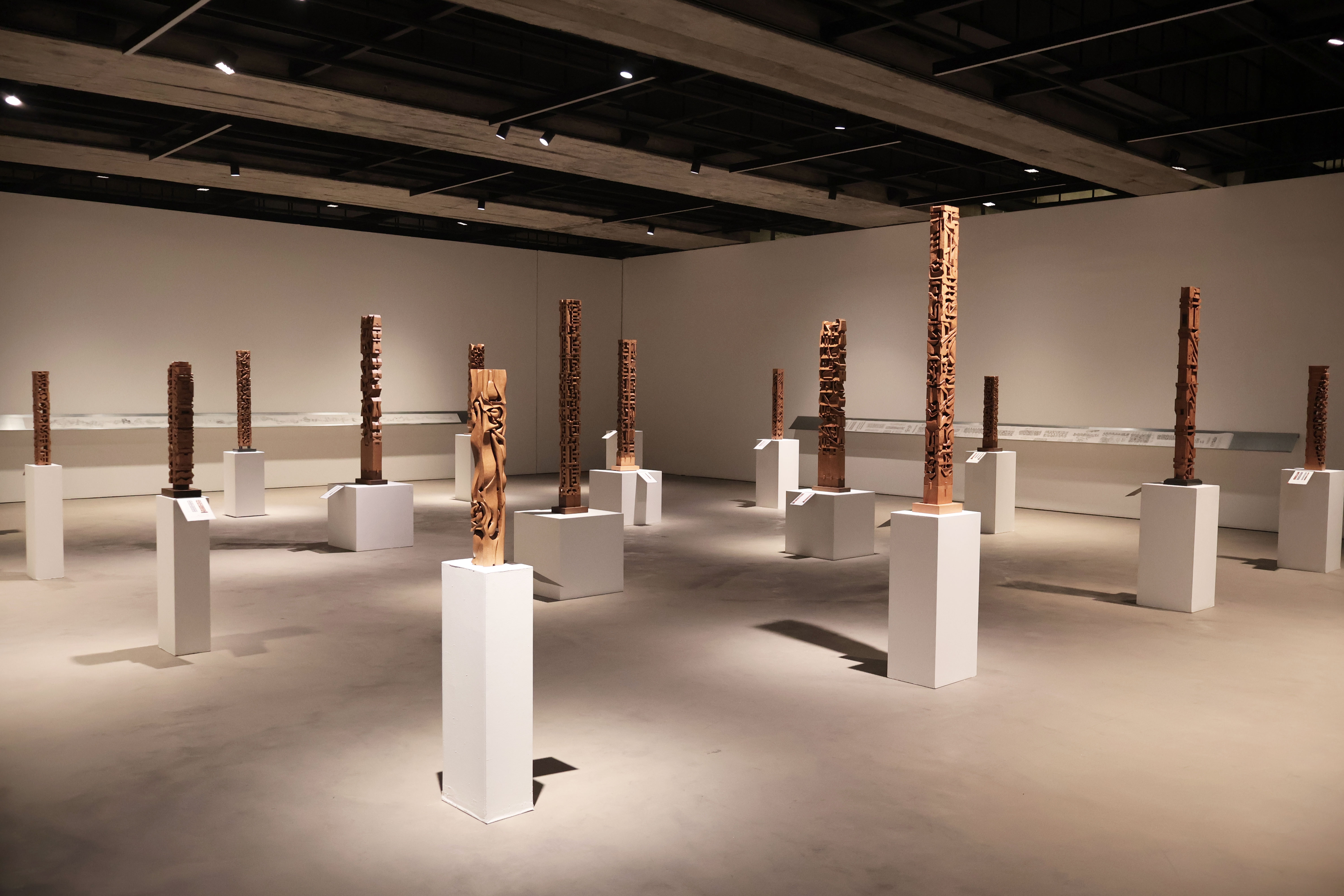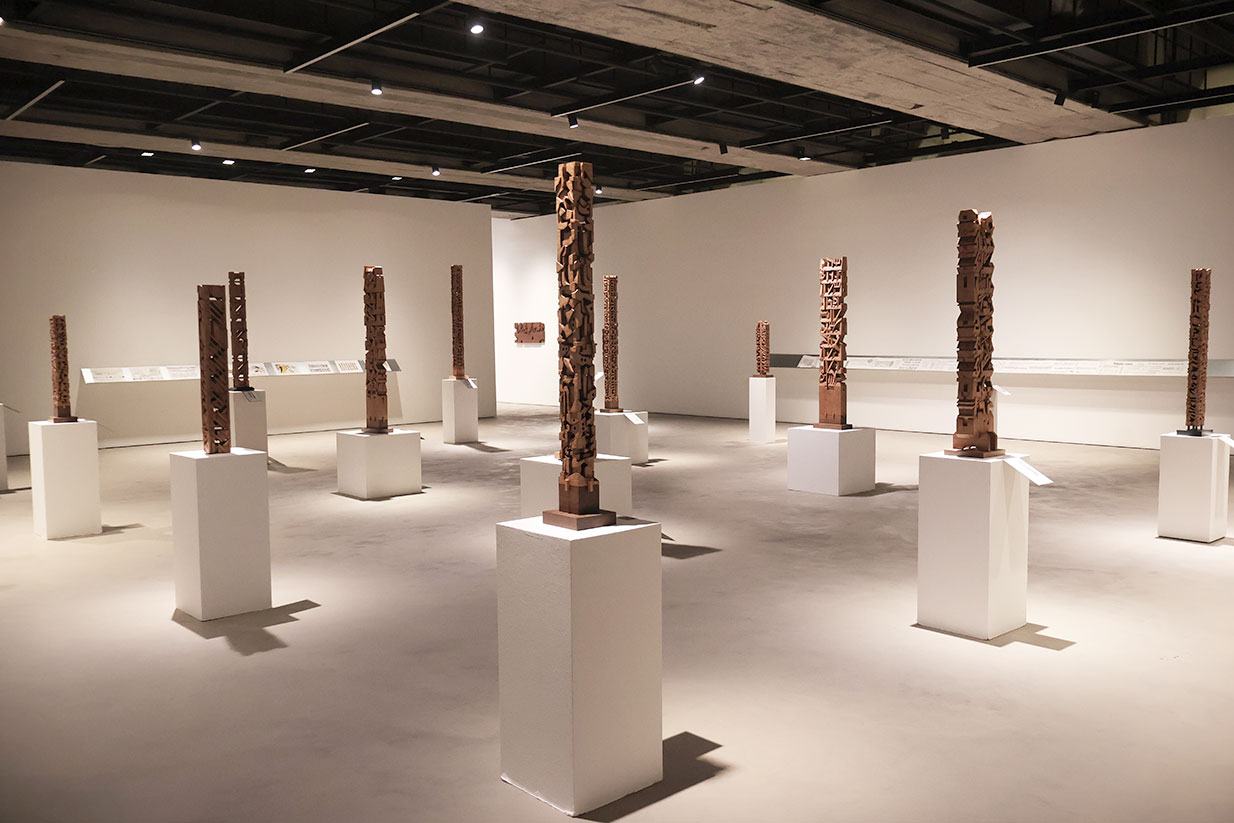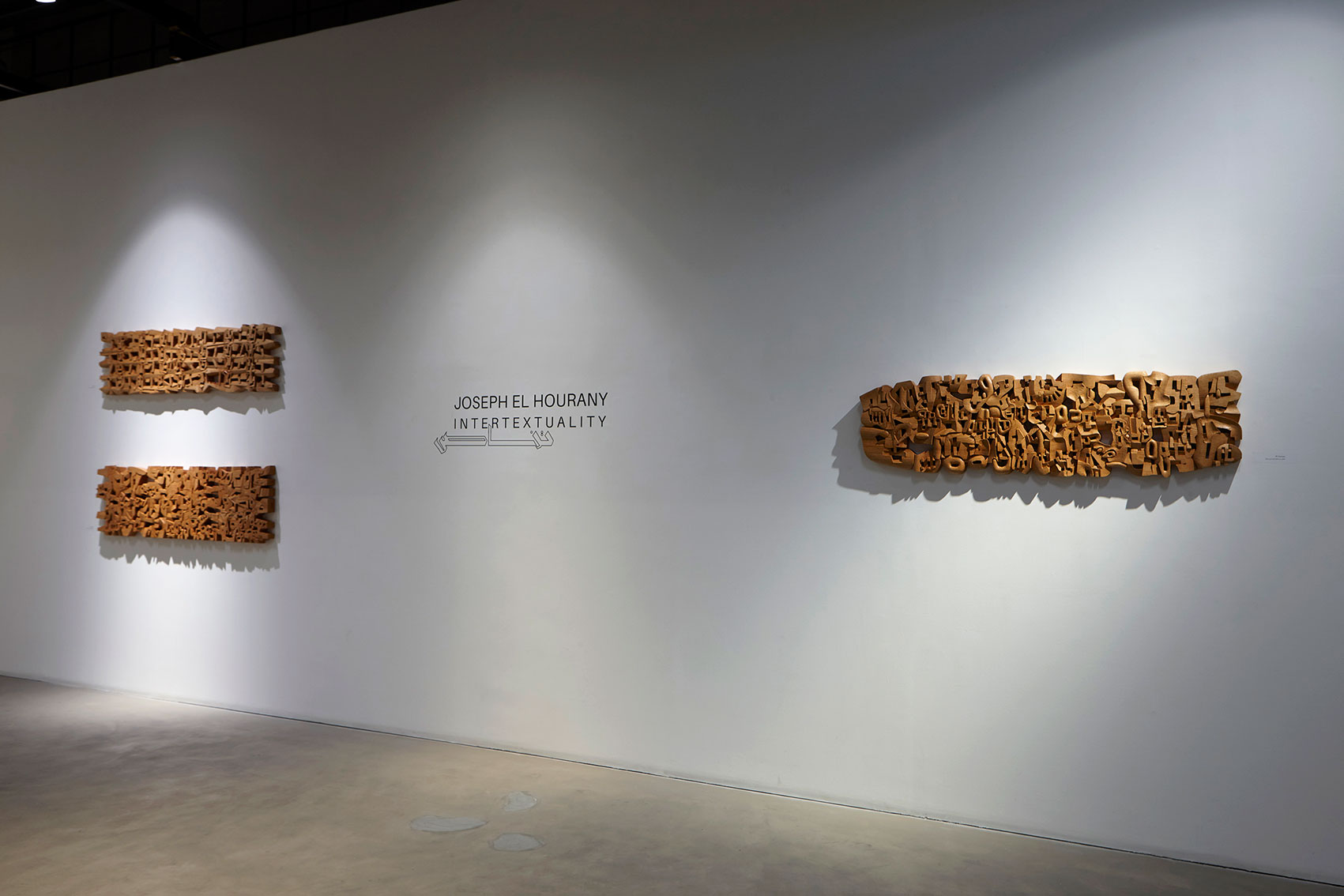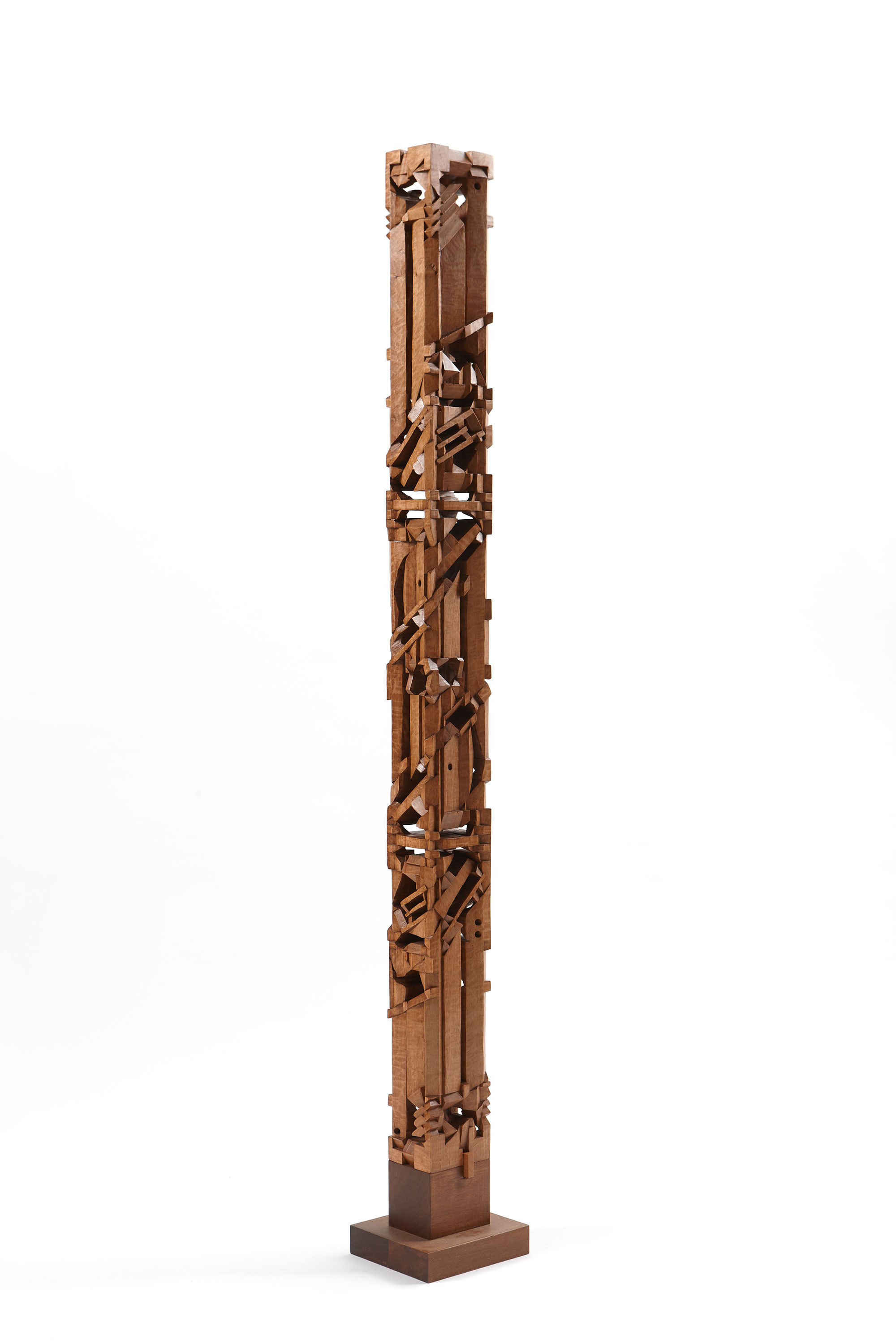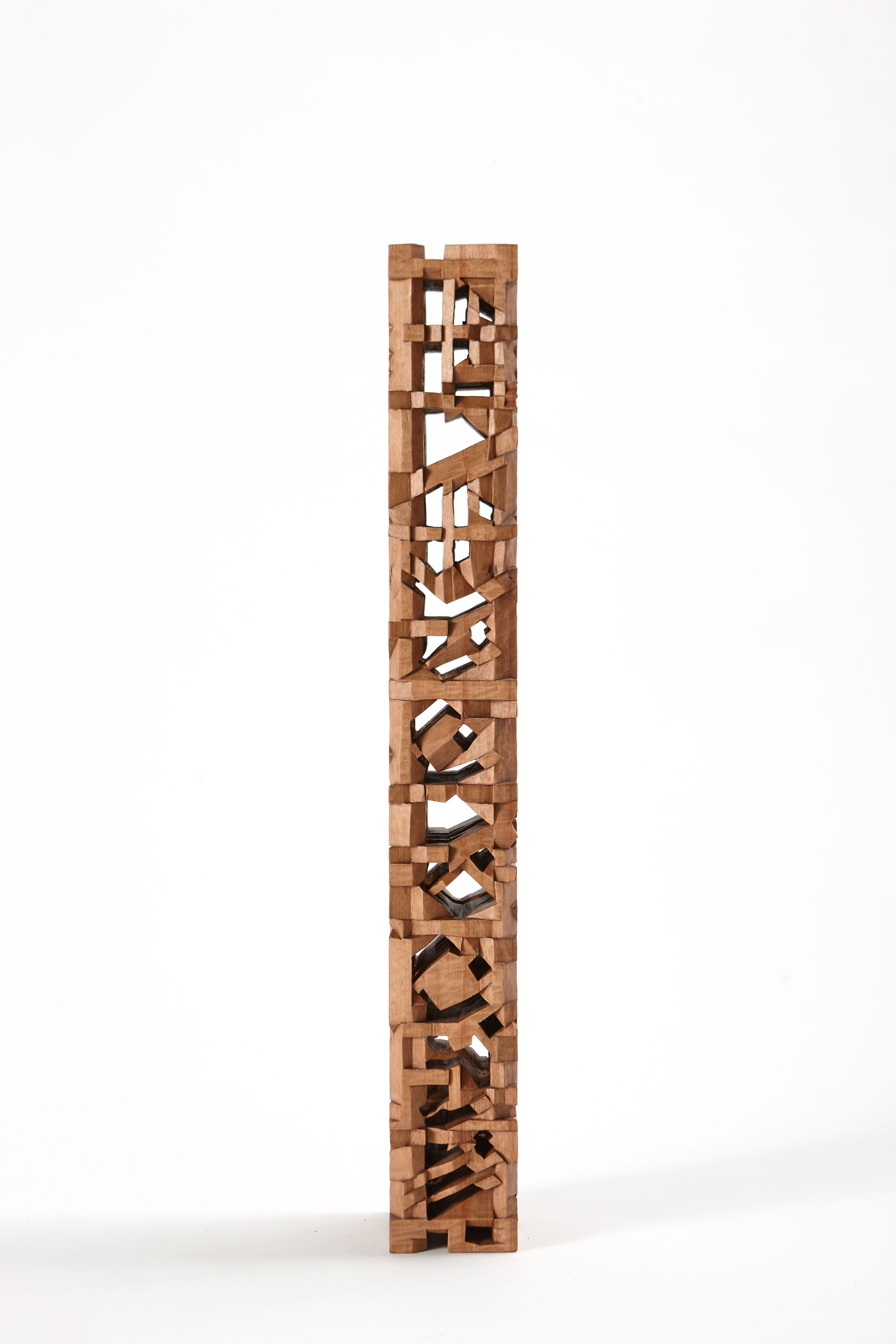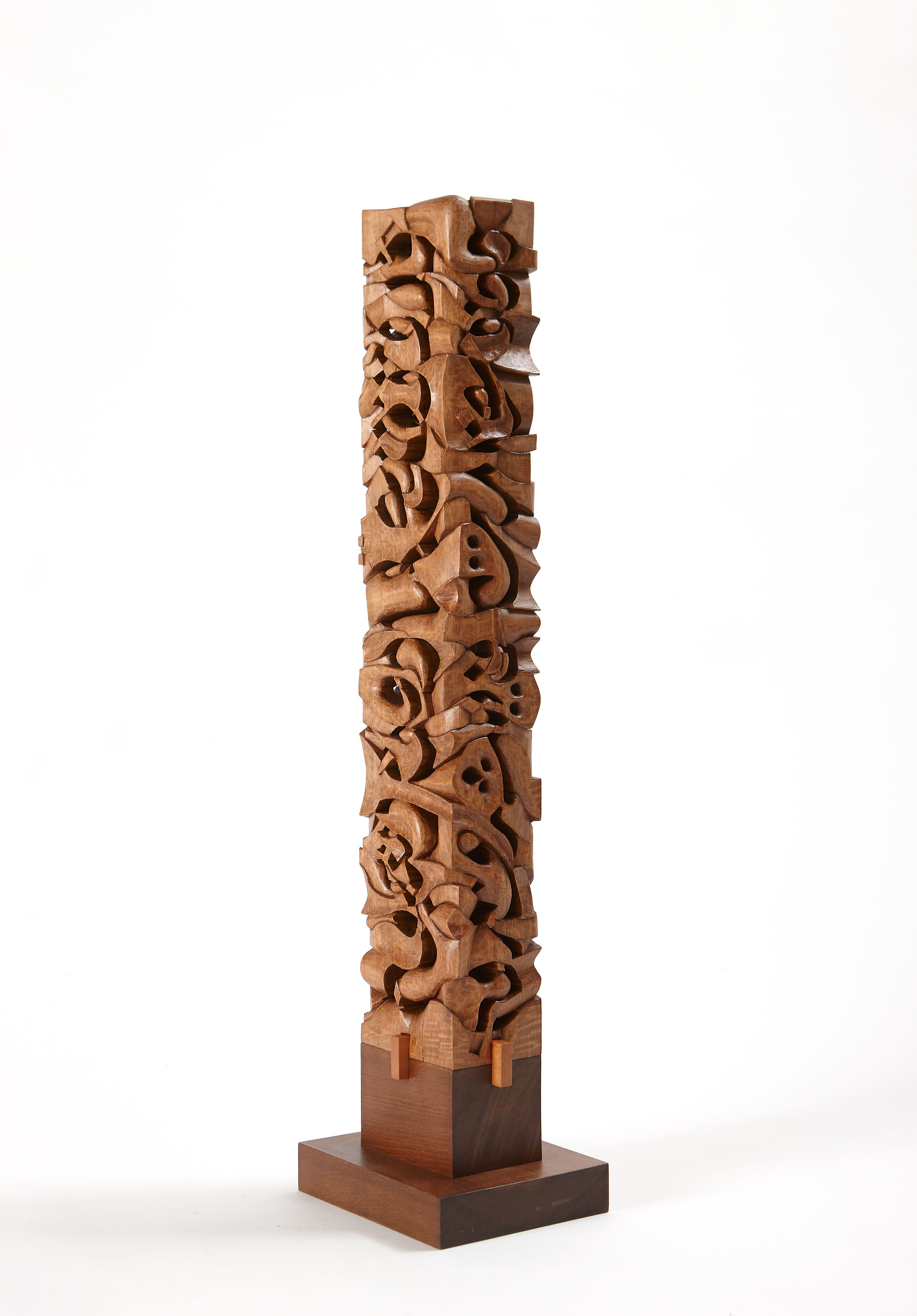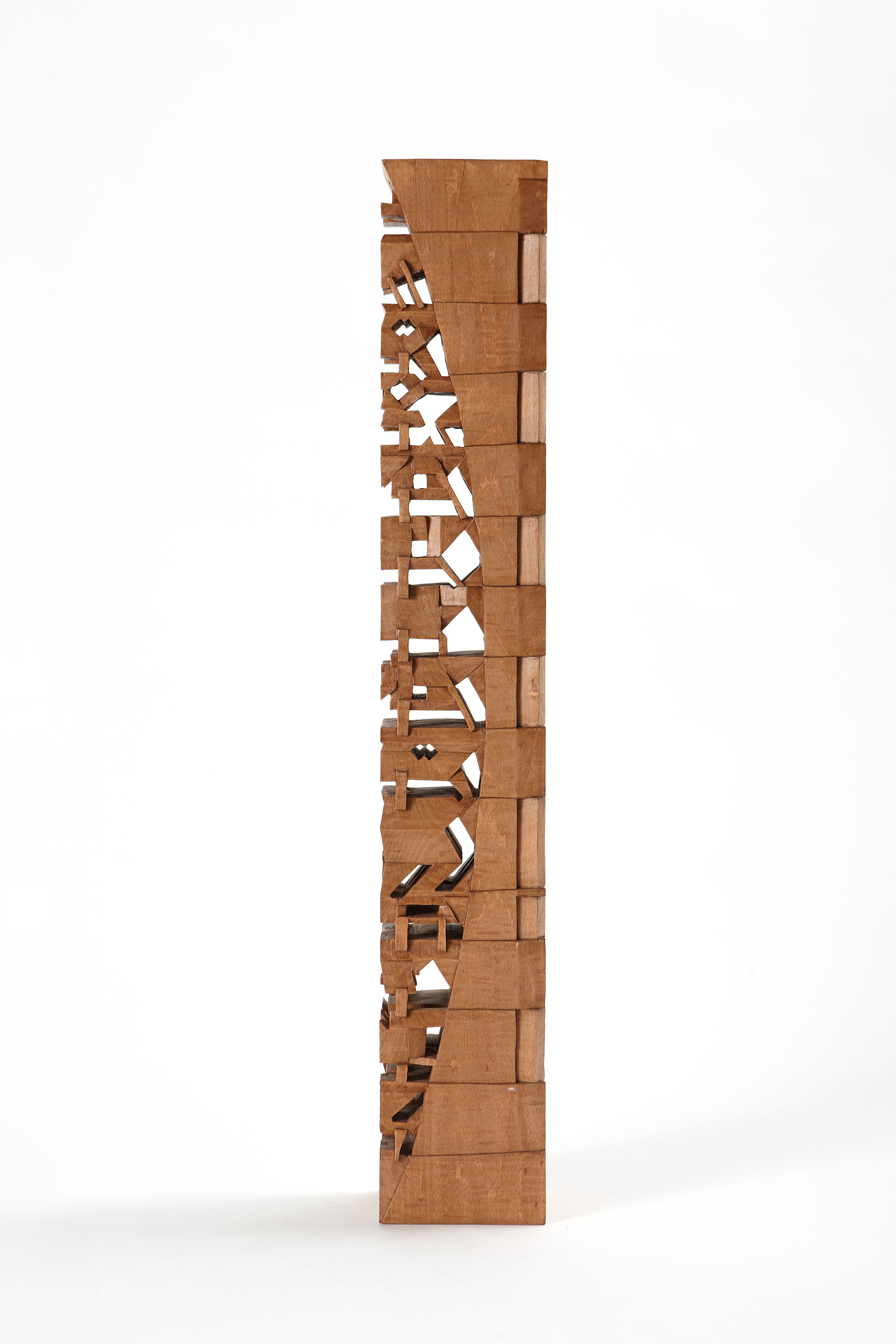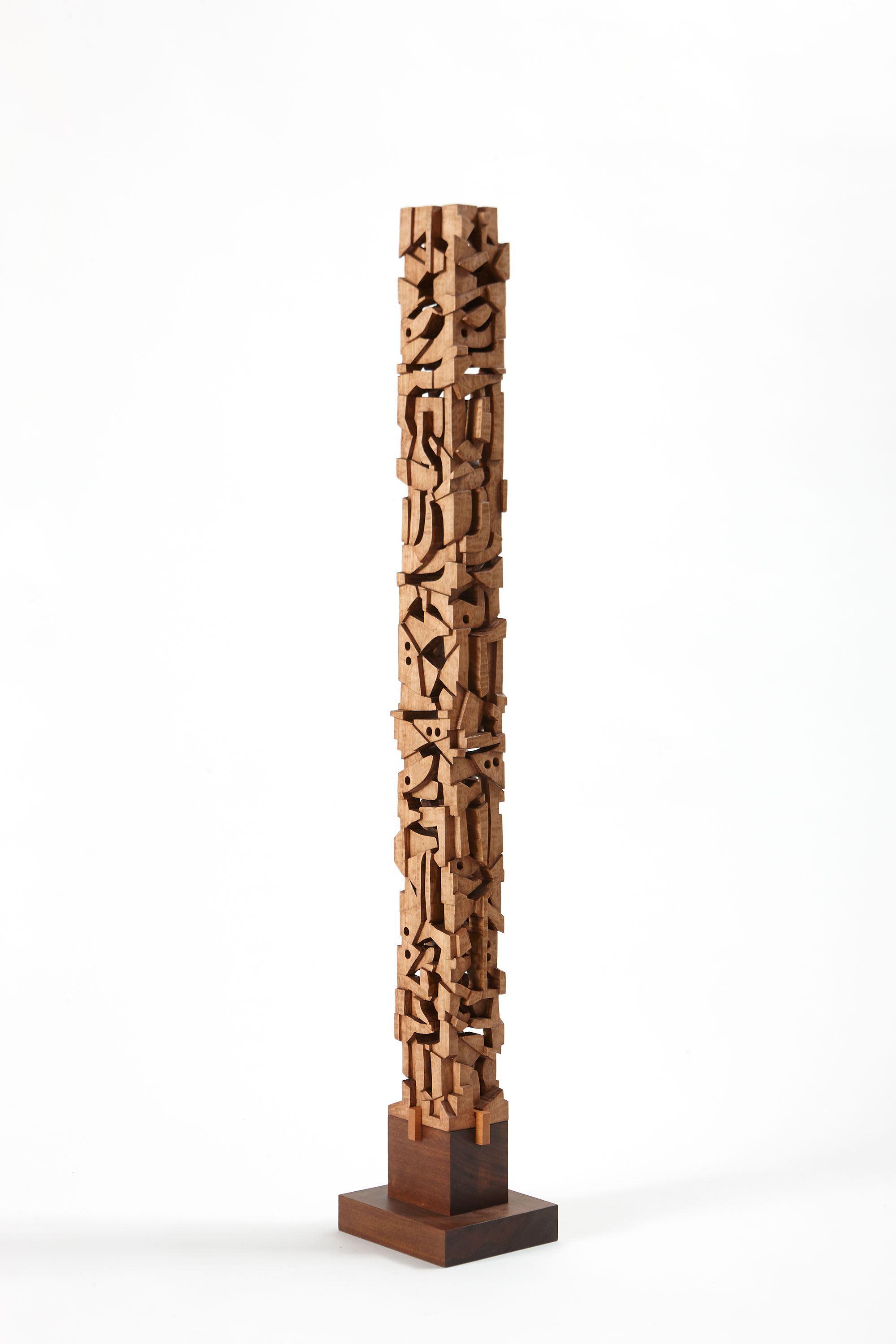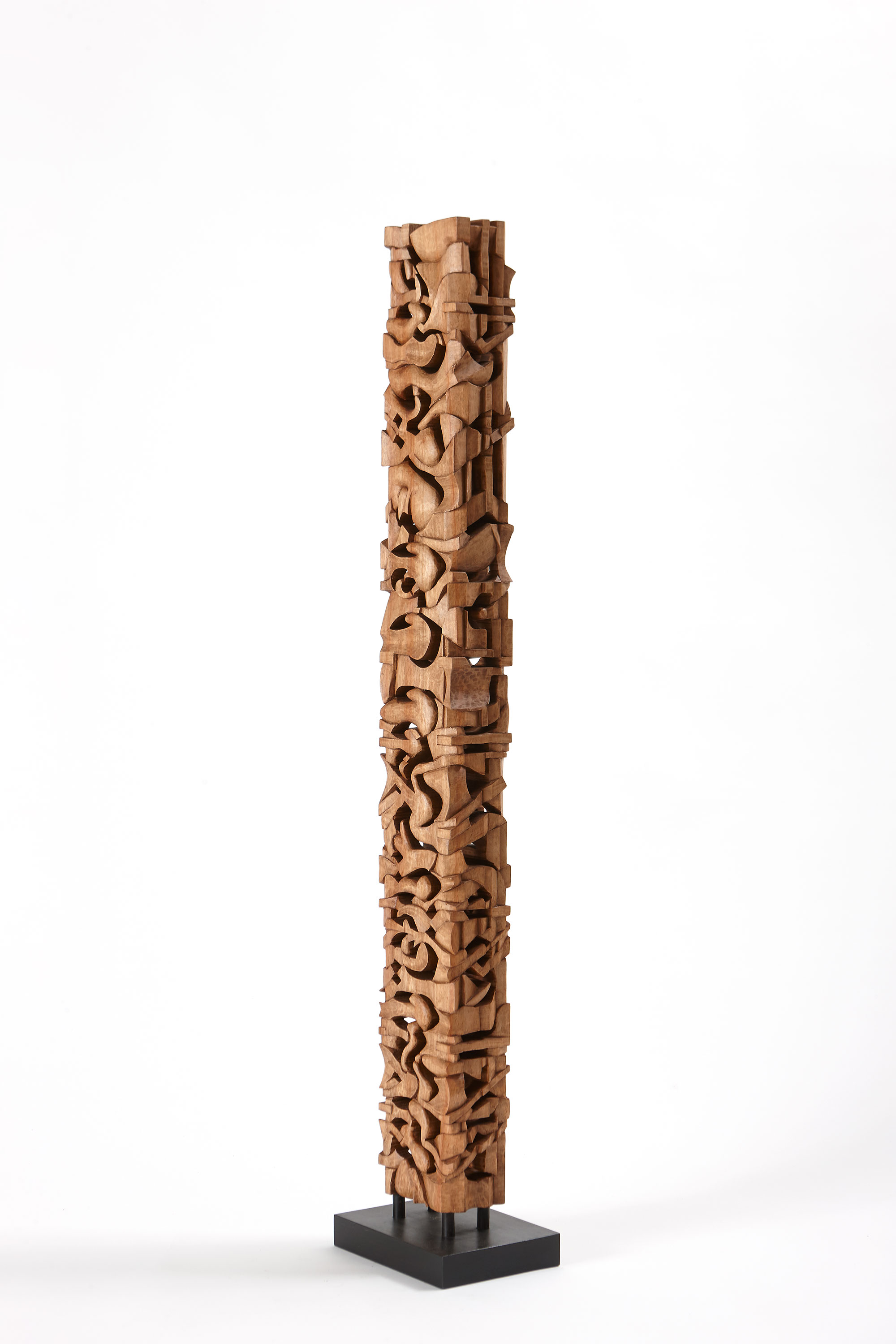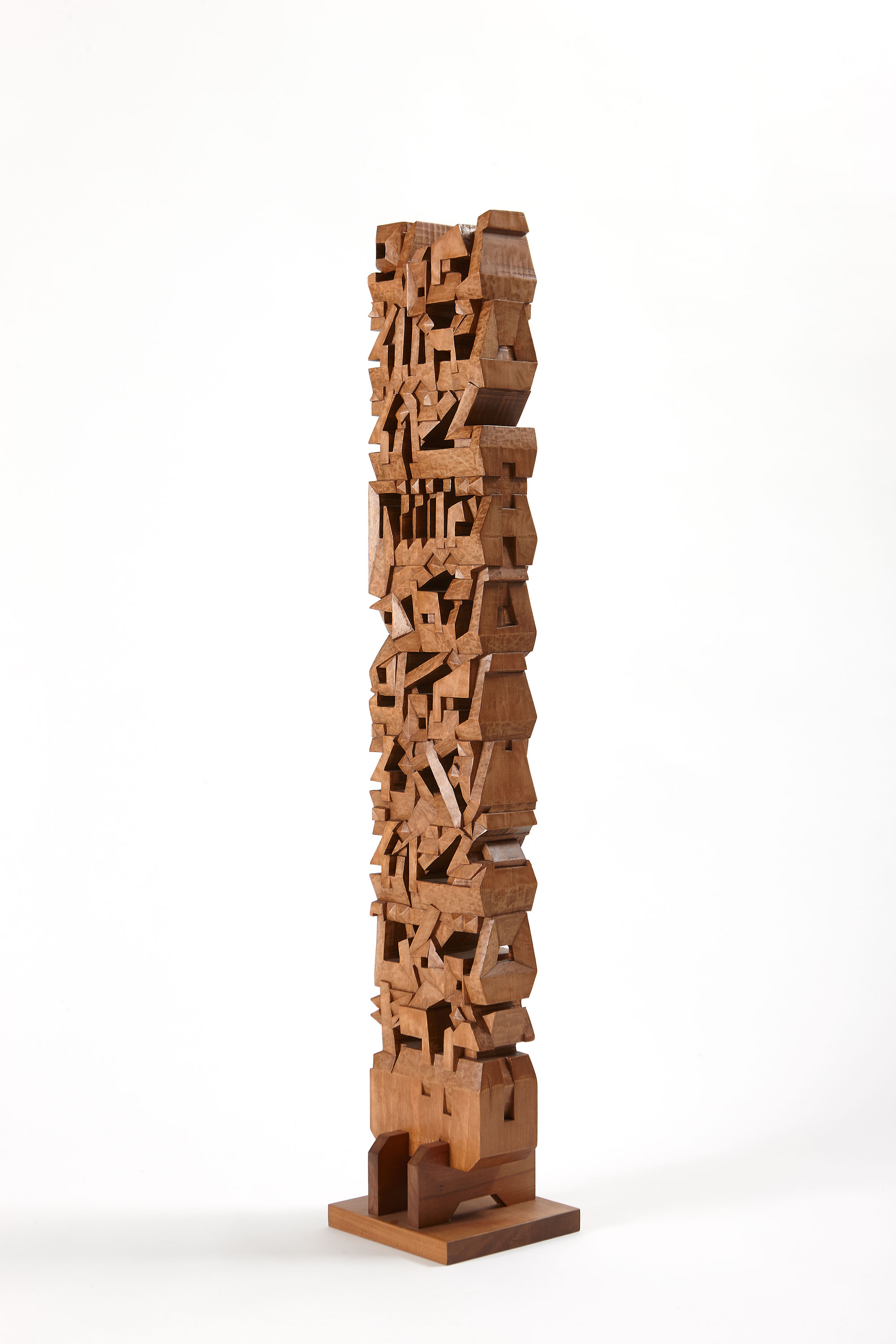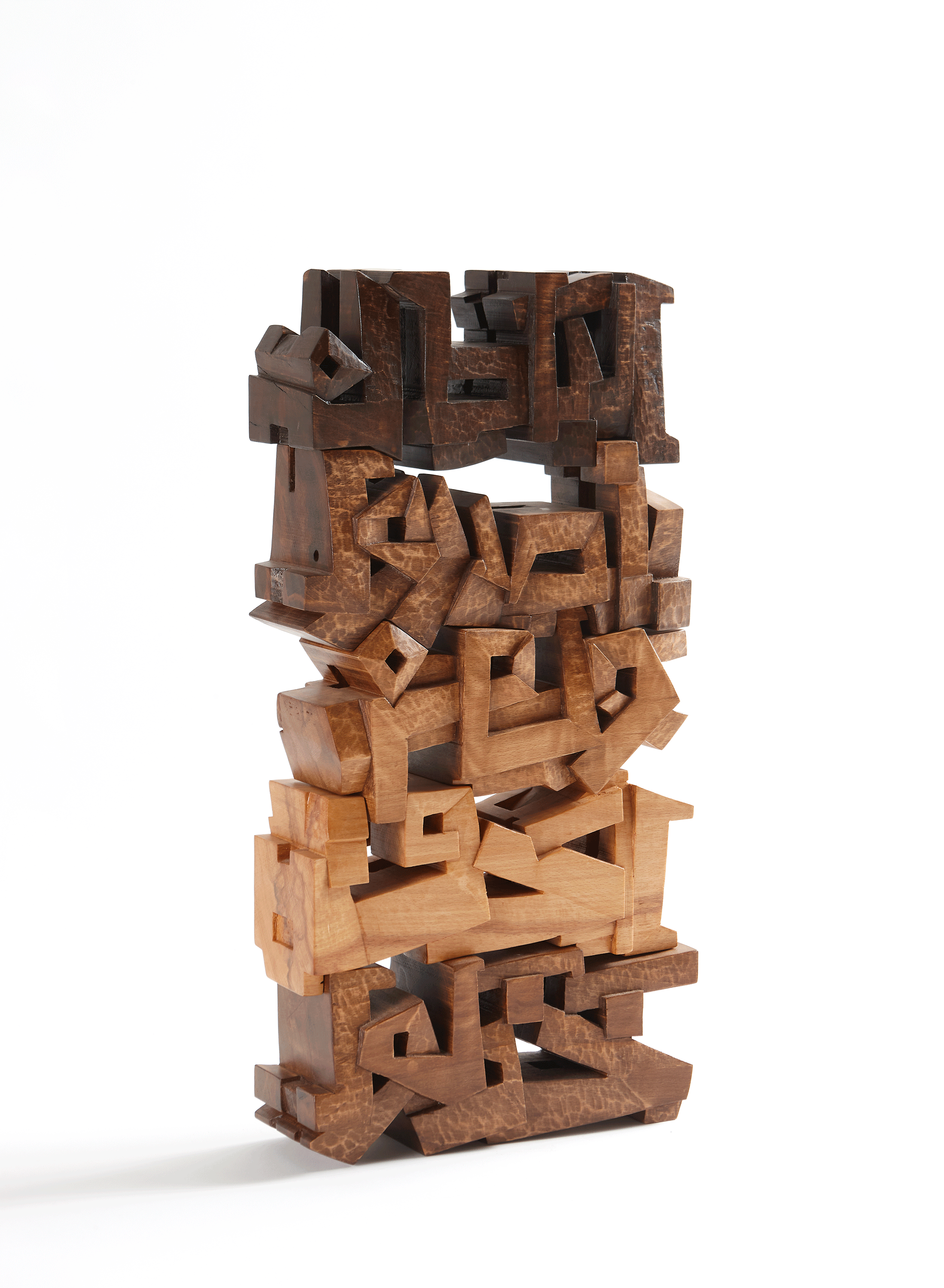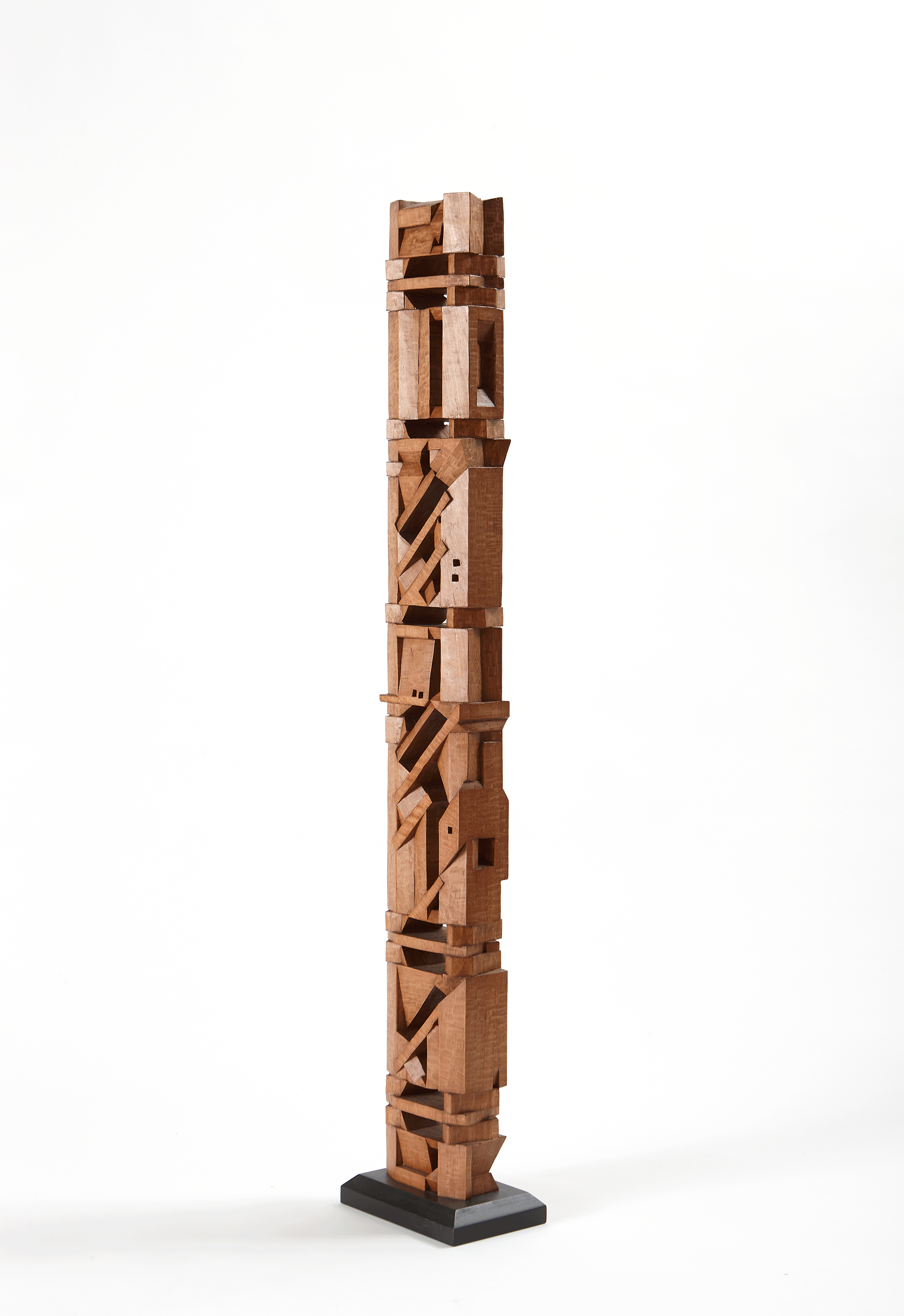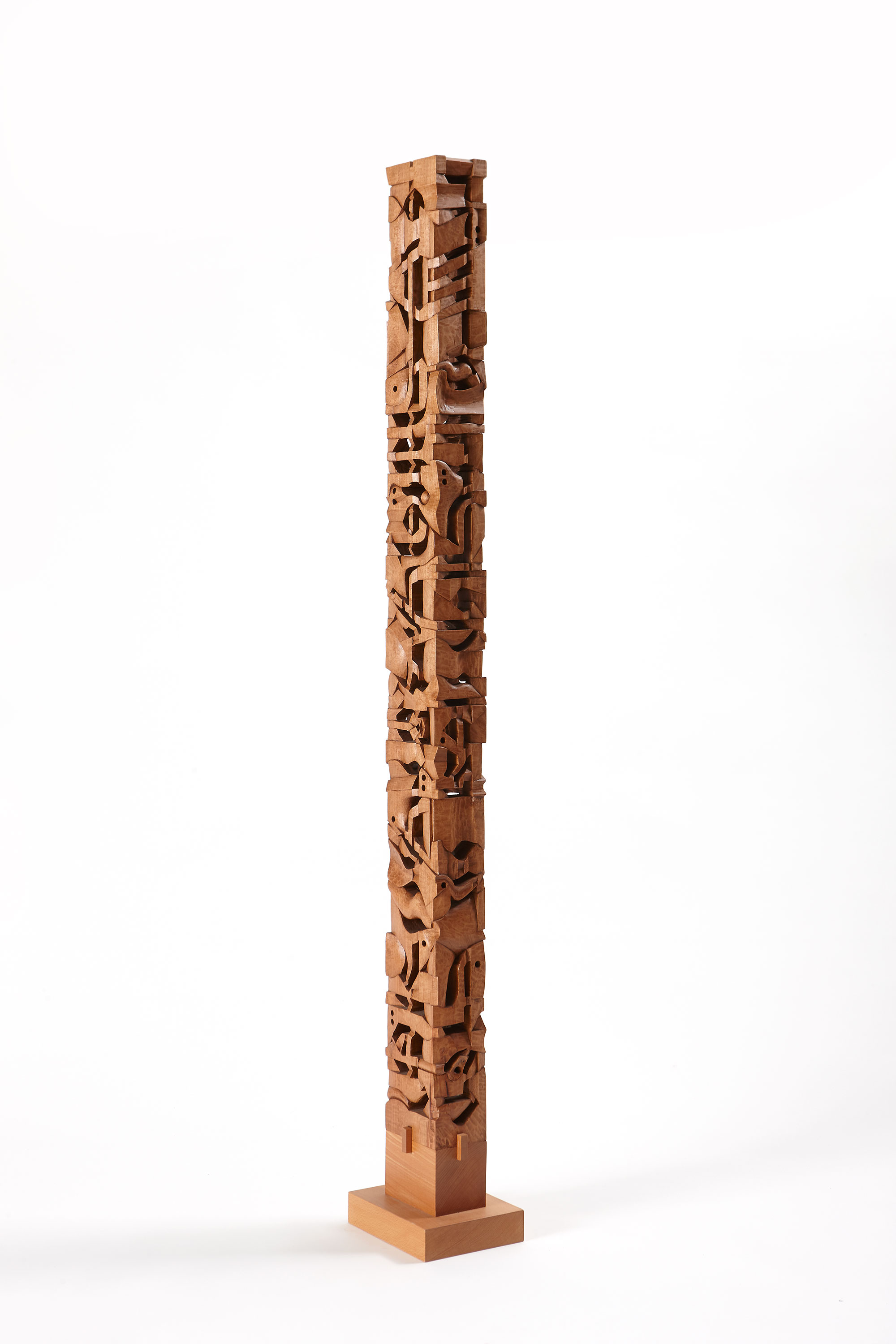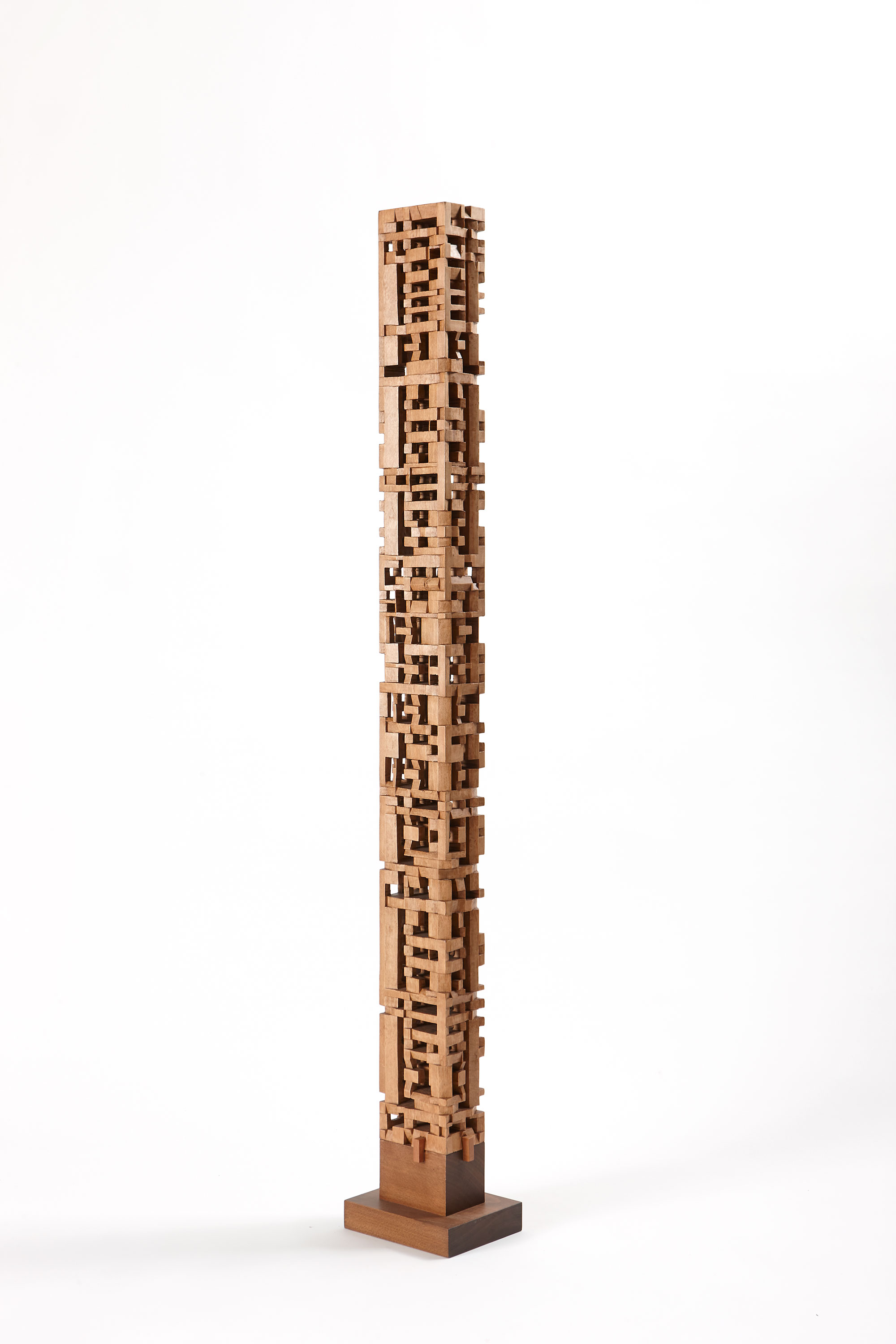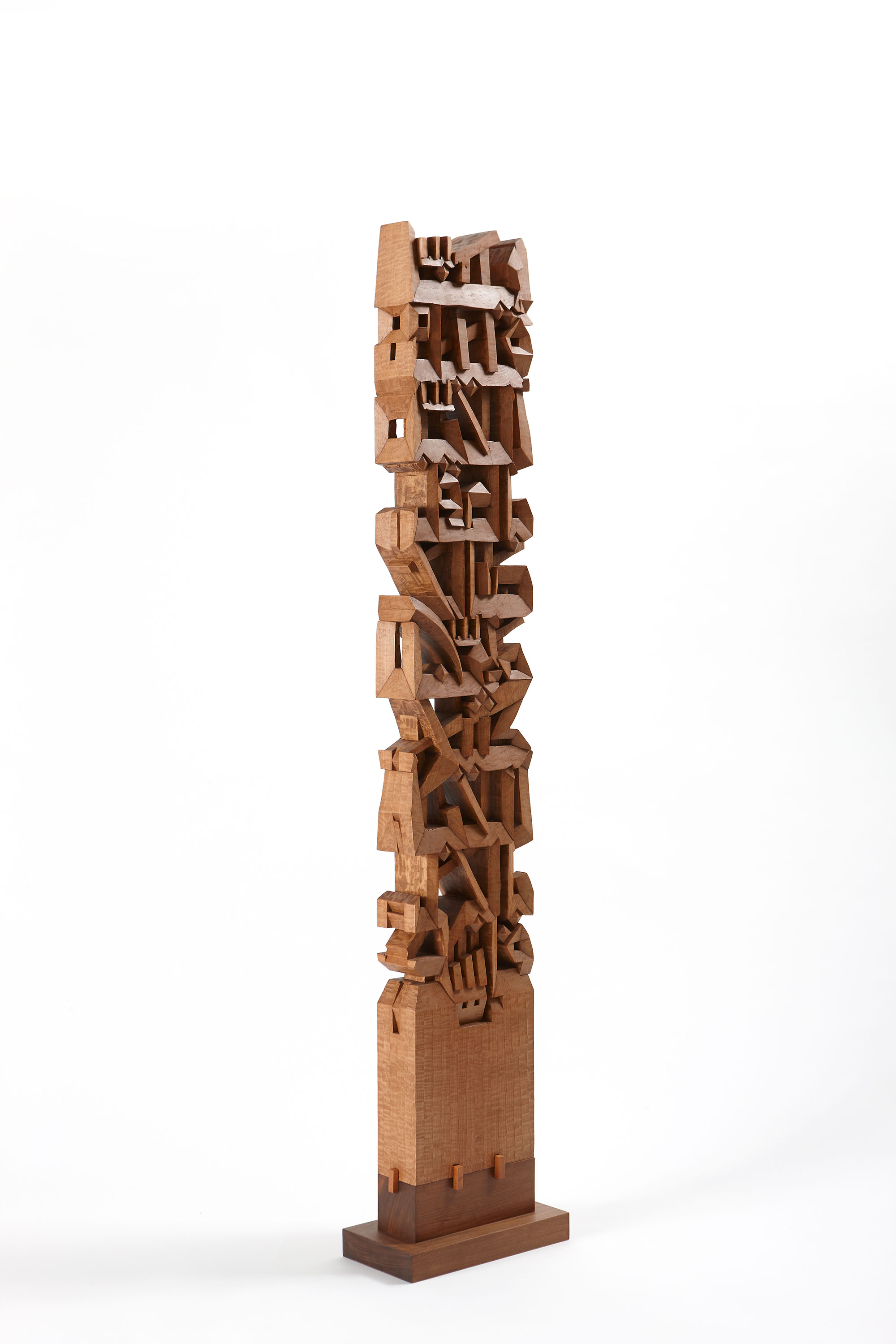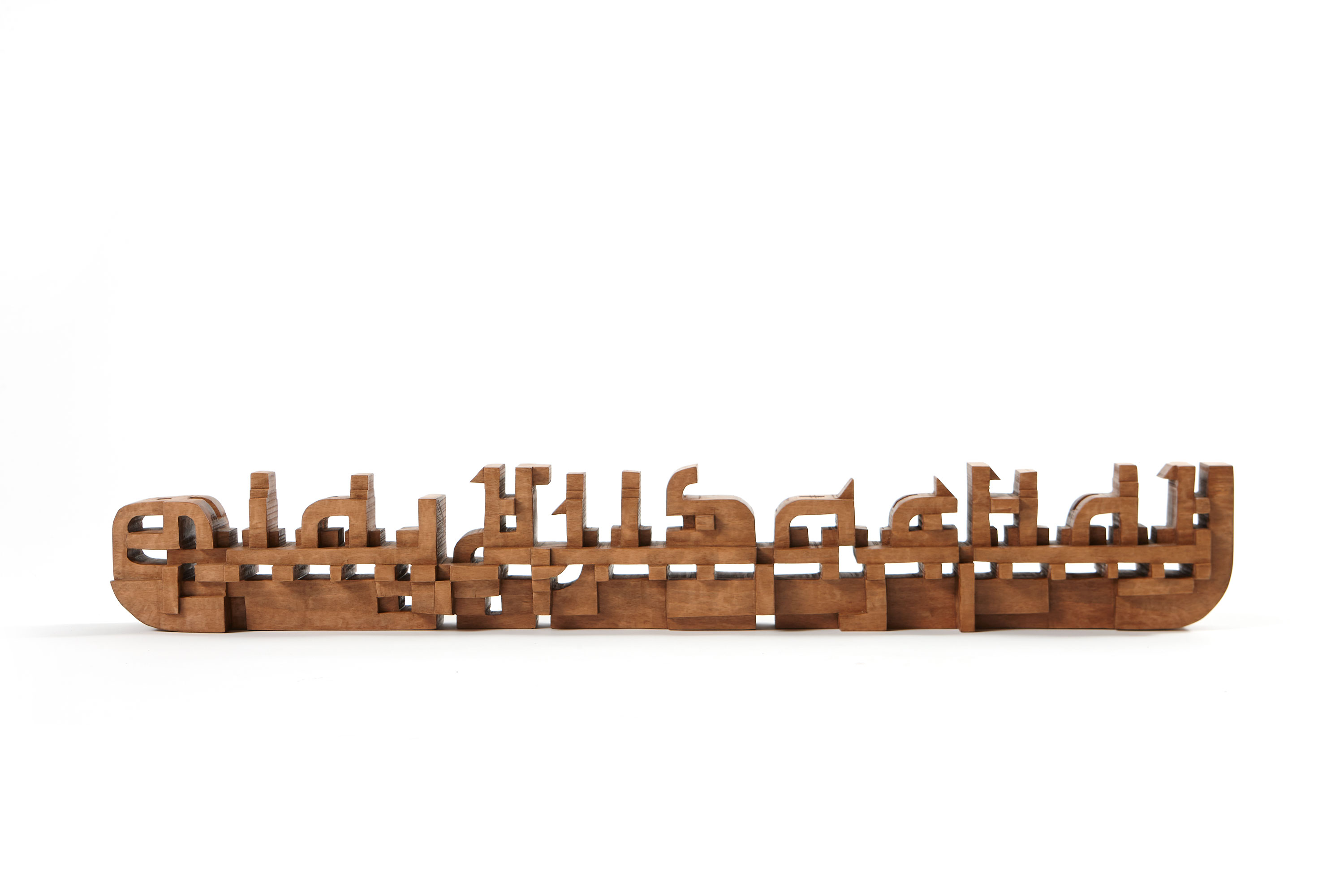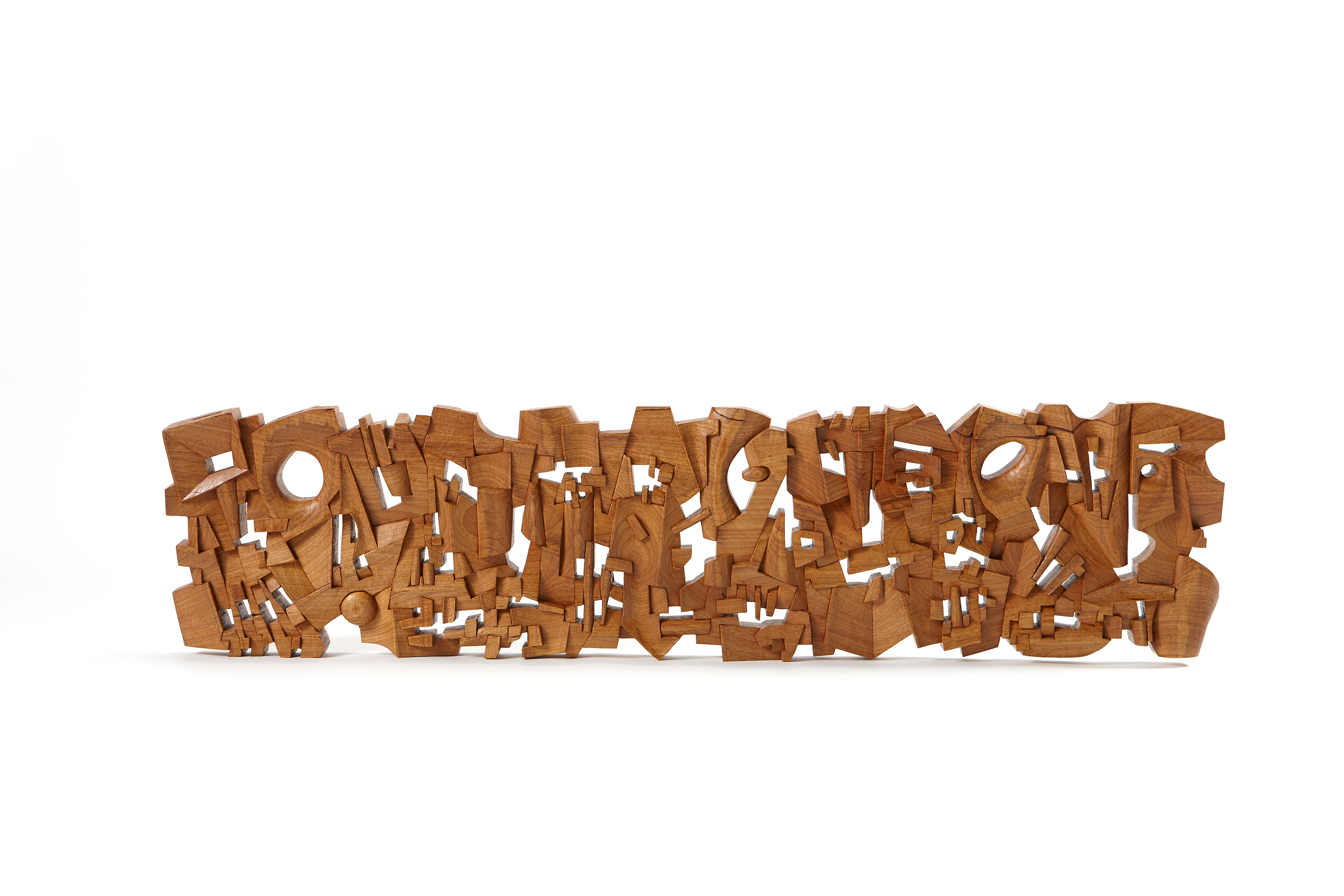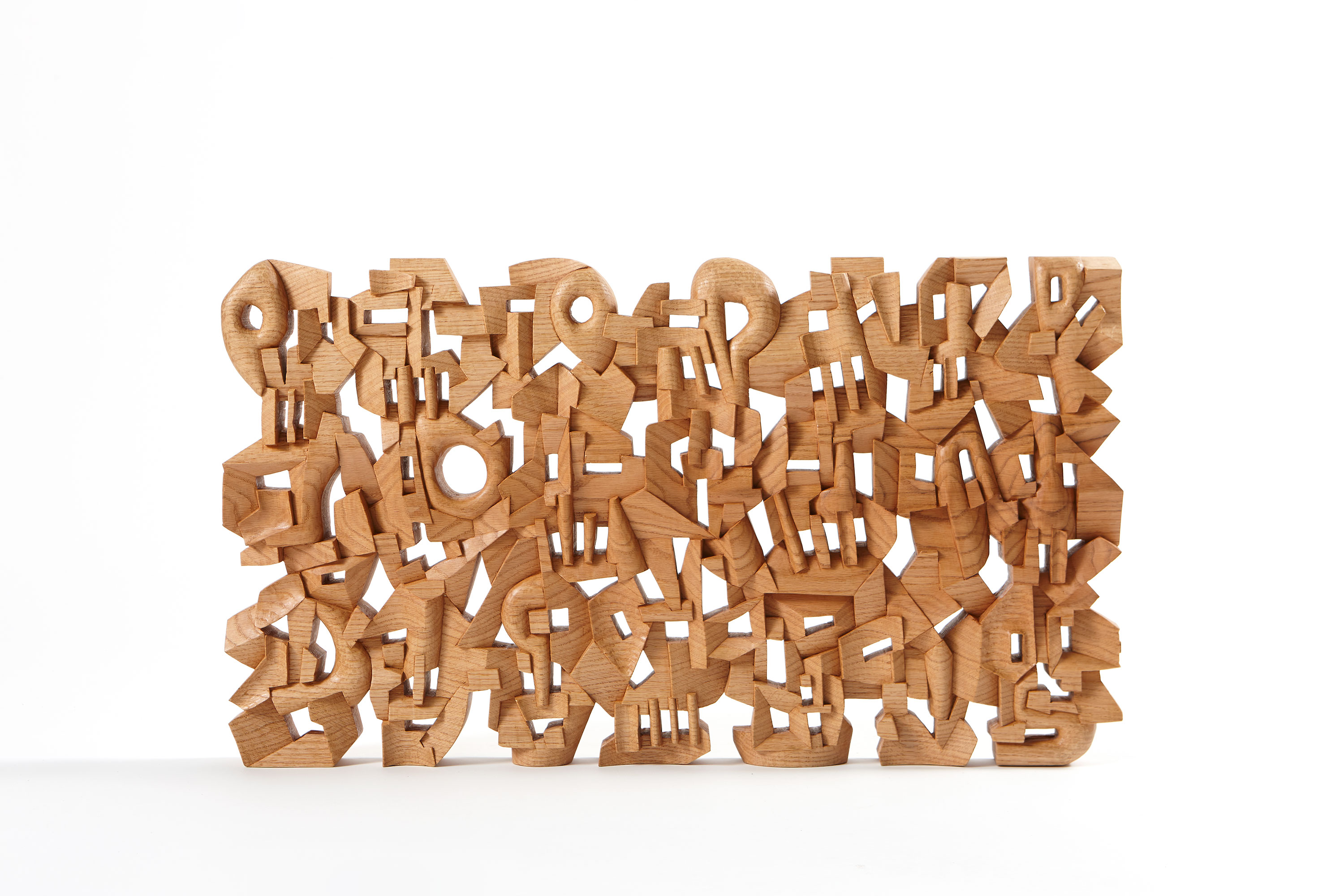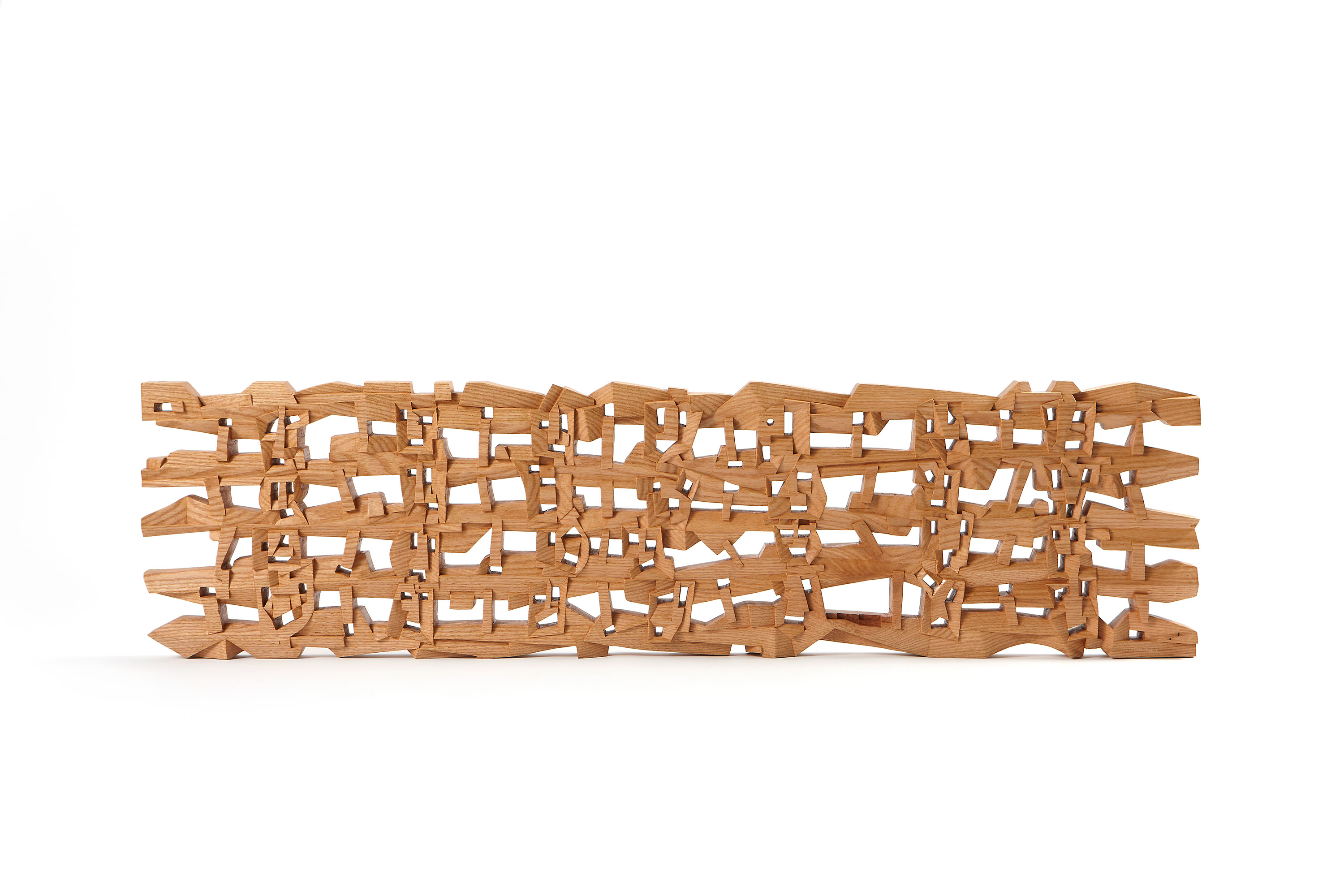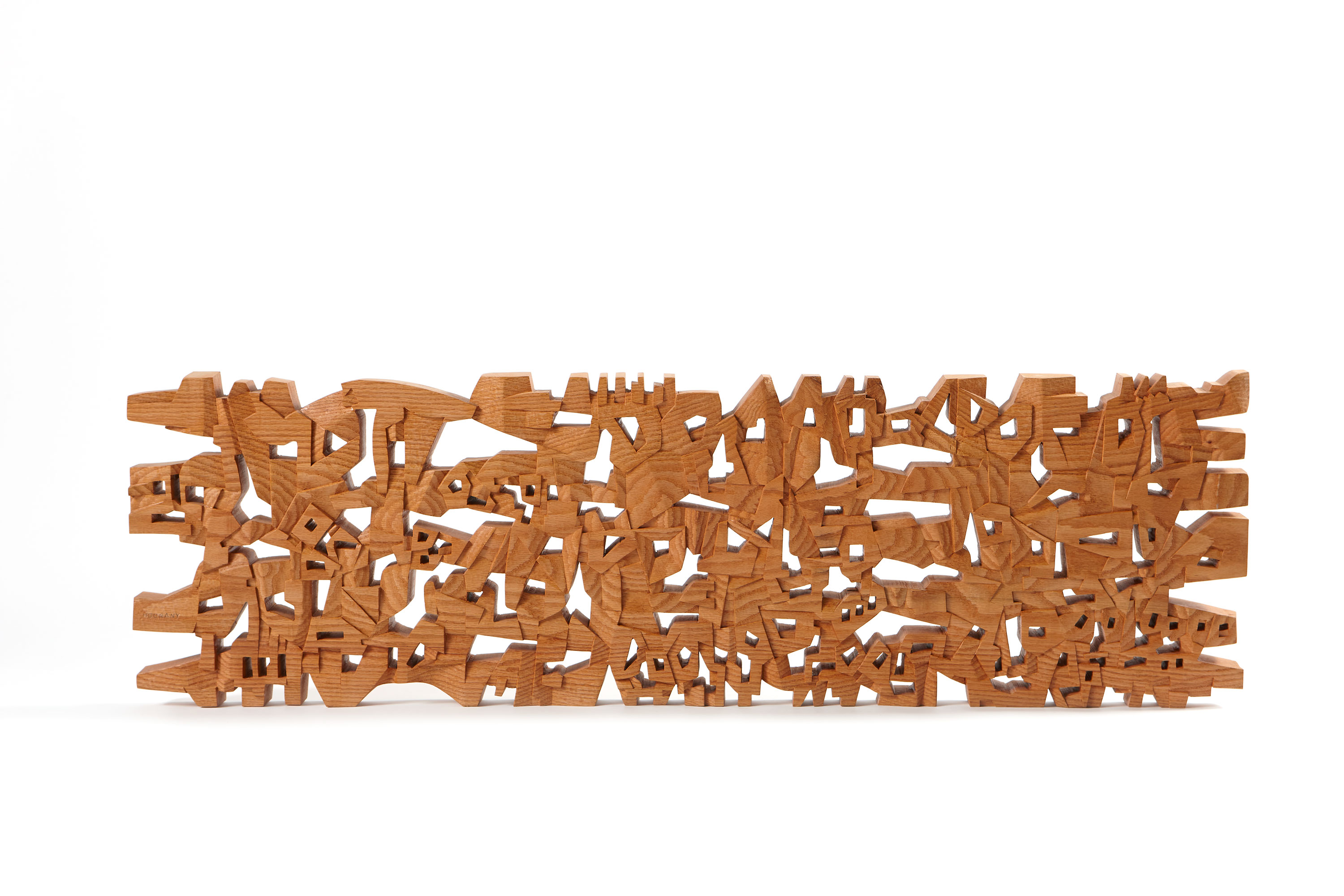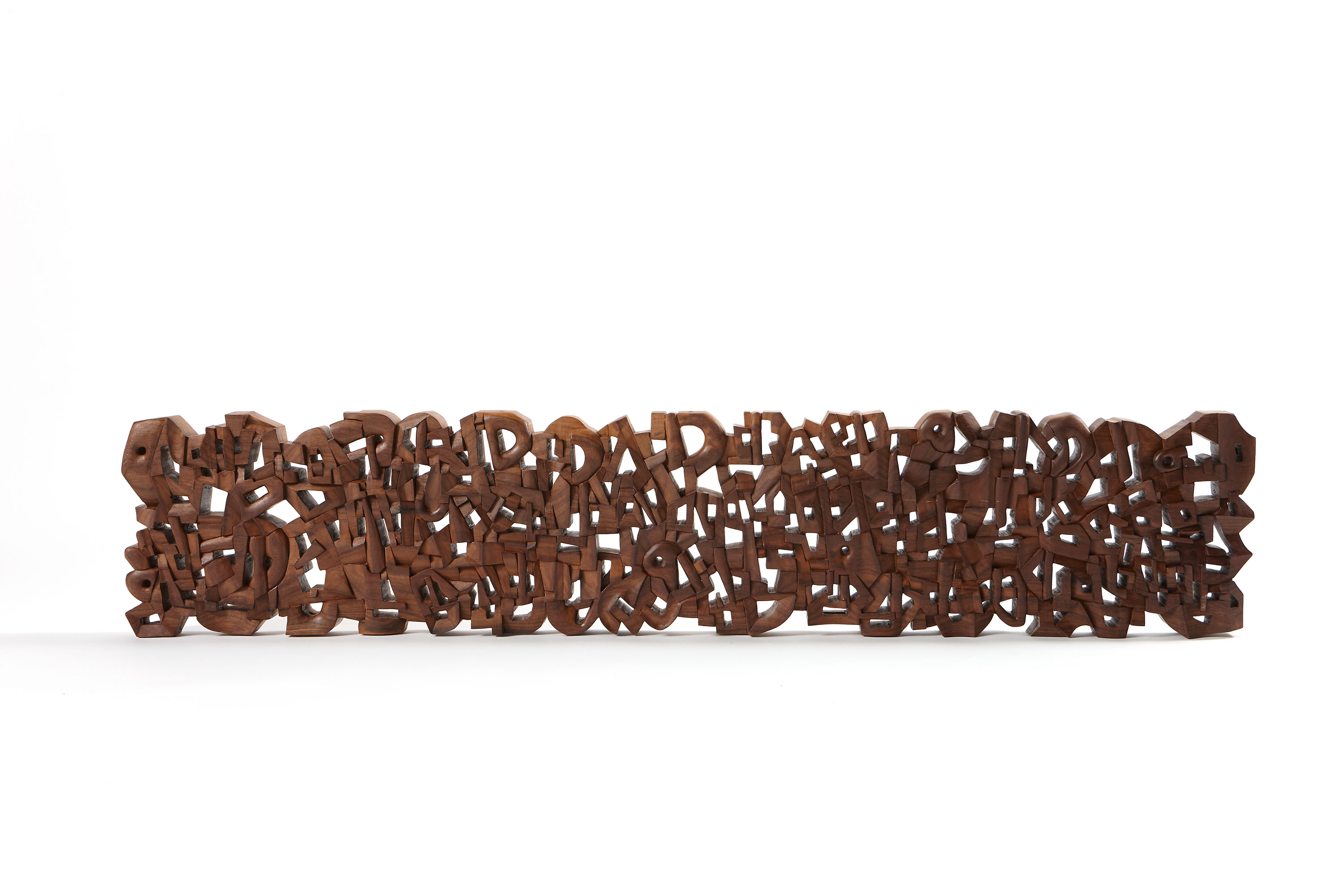El Hourany, JosephLebanon, 1974
Using morphing and mutation tactics, my sculptures are not pretending to be a particular innovative aesthetic. It looks much more at the overall interplay between the initial idea/sketch and the used wood or material. In its abundance making, a procedural experimentation is the origin of the unpredictable forms. As such, experimentation in sculpture has nothing to do with neither composition nor style. In whichever creation process, it has to do with no‐finality, with the perpetual path to another form; it provokes what comes after, what appears, and what will be seen. It can spontaneously absorb additions, subtractions, and technical modifications, without disturbing its essential order.
It is difficult to categorize the different typologies of my sculptures and memorize them; It is elusive except when we see it. All the sculptures faces and sides have equal importance for me. They do not have predetermined hierarchical relations. It is a form, therefore, indebted to the fluctuating processes that shaped it.
In the combinatorics units and assembled modules, each sculpture variation can represent multiple developments processes that generate its design objectives. Many tactics during the sculpting process fulfill the complementarity; some are especially apt to describe the character behind the piece: similar yet different. The used sculpting practices can be characterized in folding, form‐finding, deconstructed geometries, free‐form and hybrids.
In the combinatorics units and assembled modules, each sculpture variation can represent multiple developments processes that generate its design objectives. Many tactics during the sculpting process fulfill the complementarity; some are especially apt to describe the character behind the piece: similar yet different. The used sculpting practices can be characterized in folding, form‐finding, deconstructed geometries, free‐form and hybrids.
All these categories describe development and variation of the form independently of either physical constraints or the limitations of the simple geometries. The supple biomorphic meets up with deconstructed solids, the bodily with the prosthesis. When viewing these sculptures together – portraits, human bodies without organs and organs without bodies – all spring to mind, but so too biomorphic, ornaments and simulacres. One can even imagine them as part of an unknown ritual practice, which is in fact plausible given that I am a passionate collector of all kind of design objects.
In my practice, the imaginary assumptions of both geometrical and polymorphic typologies assumed that a direct correlation exists between abstract forms (intellectual) and figurative forms (sensate).
In my practice, the imaginary assumptions of both geometrical and polymorphic typologies assumed that a direct correlation exists between abstract forms (intellectual) and figurative forms (sensate).
While the two strains of thought might seem different, one being primarily problematic and the other fundamentally architectural, both rely solely on the same procedure of tangible figuration. The reliance on the figurative aspect to justify form wholly empowers both the intellectual and the sensate perceptions. –Joseph El Hourany
